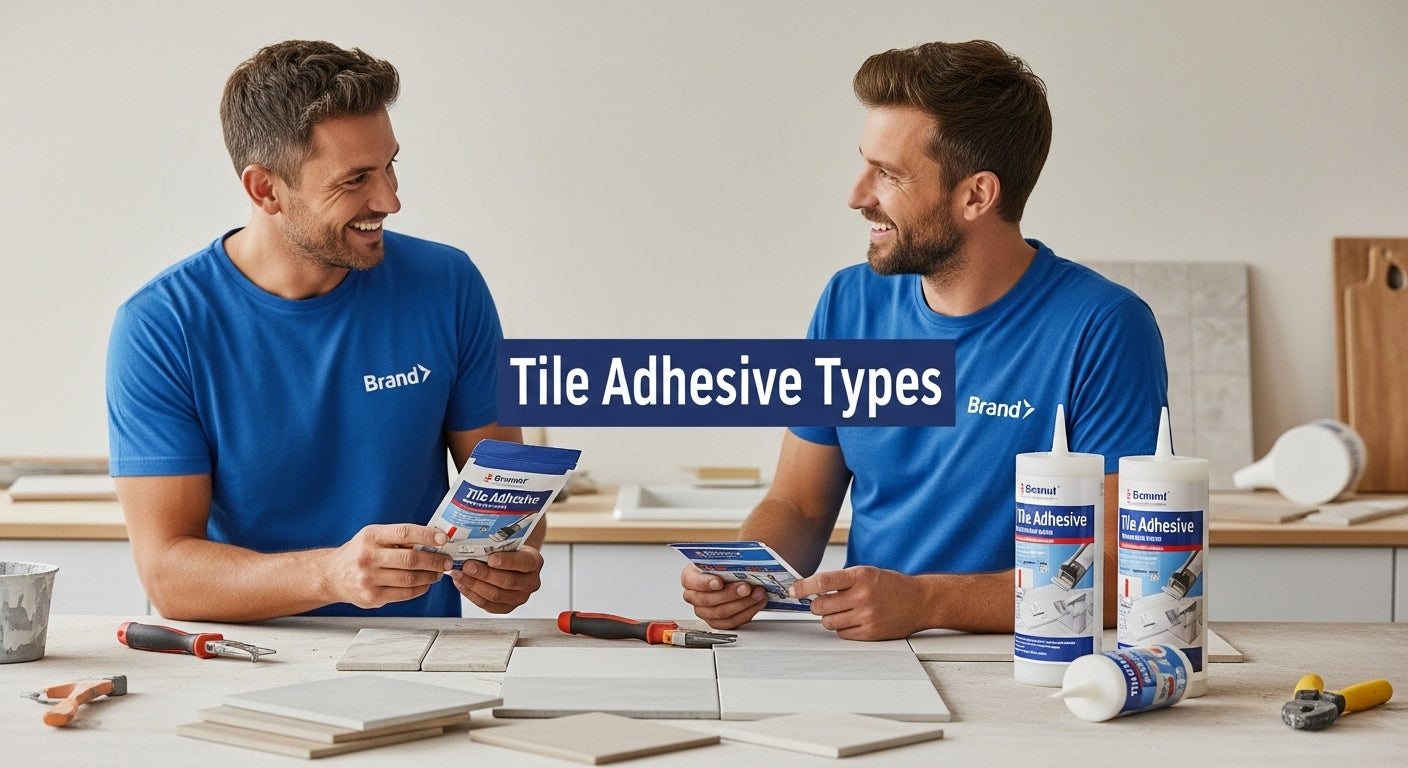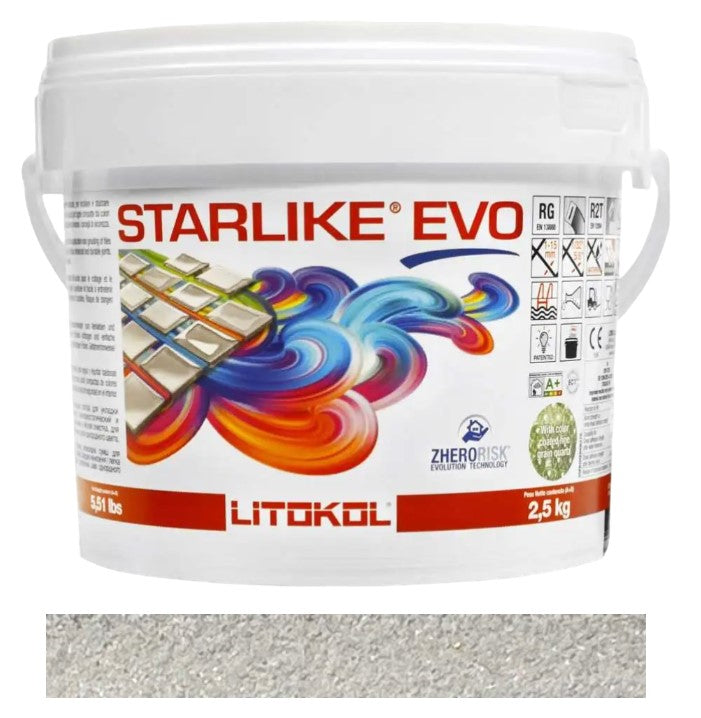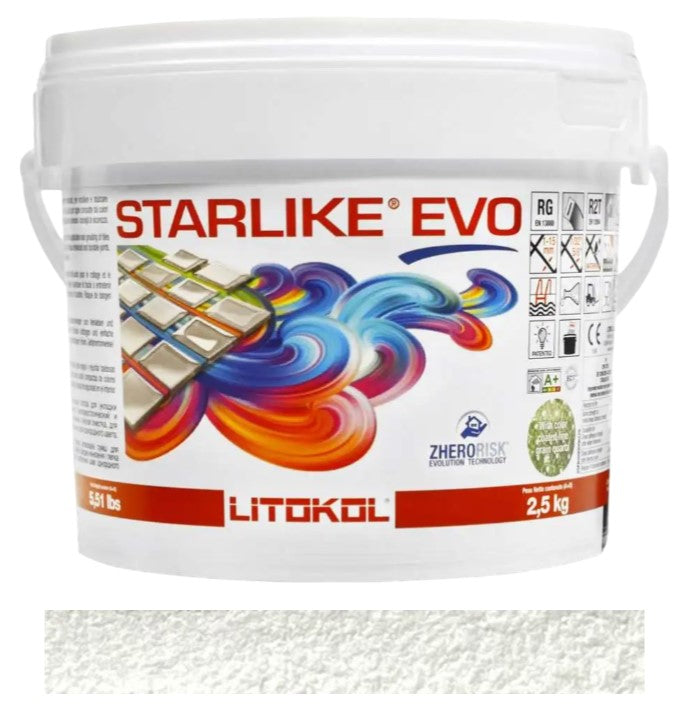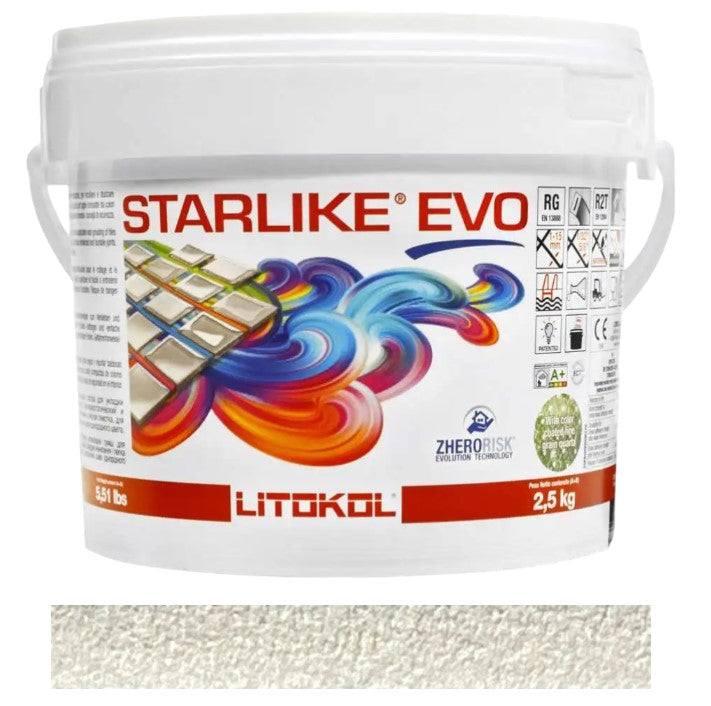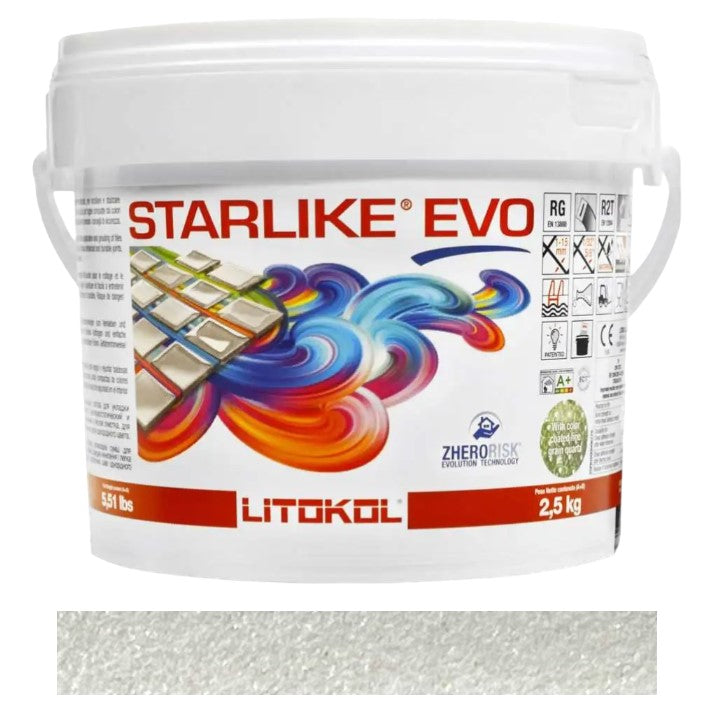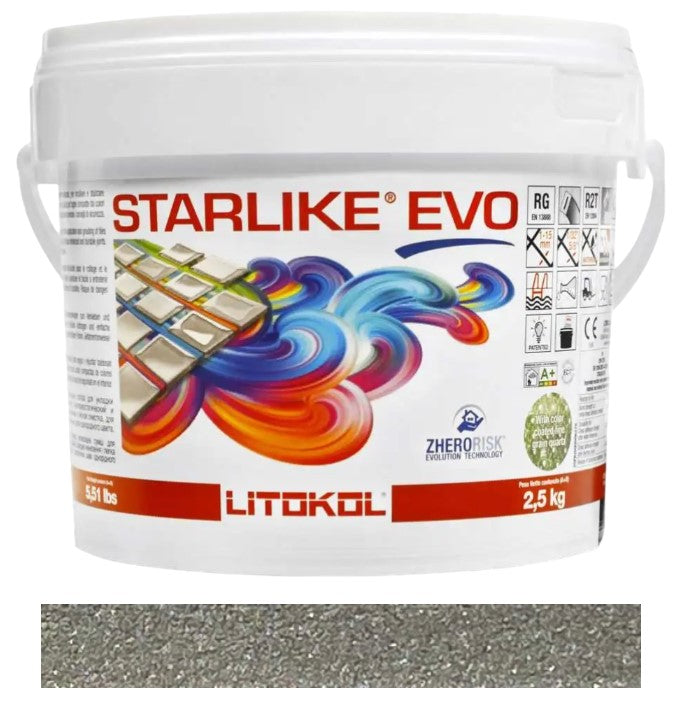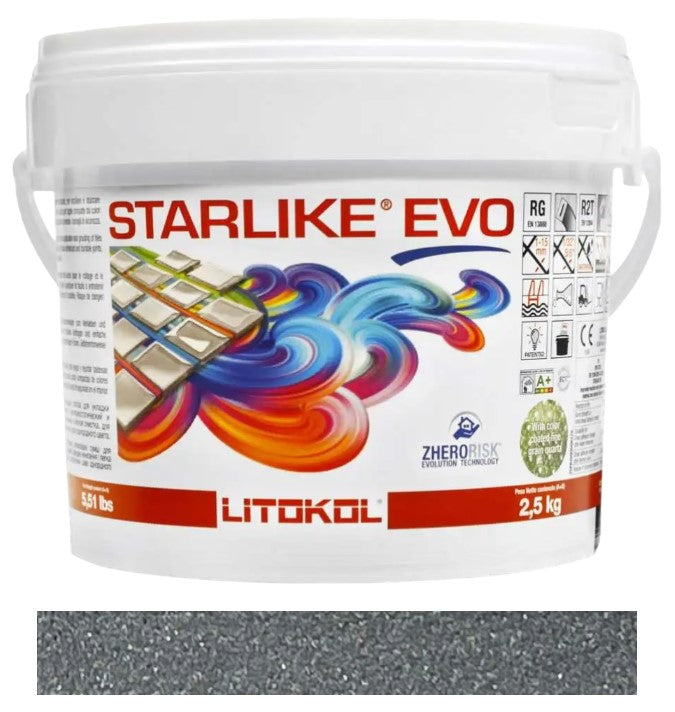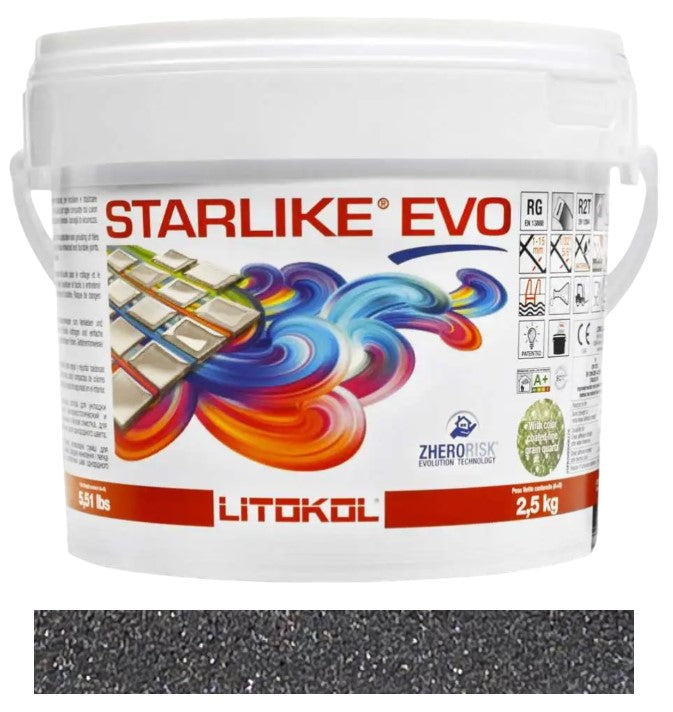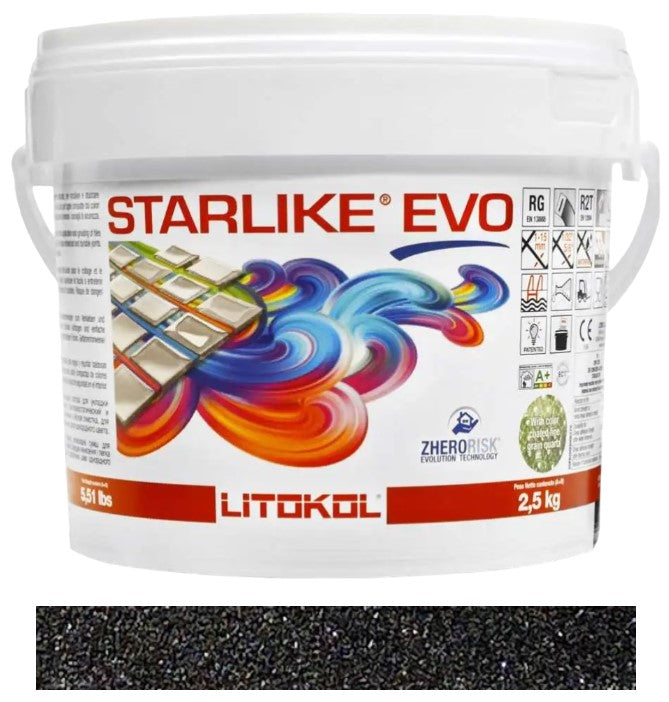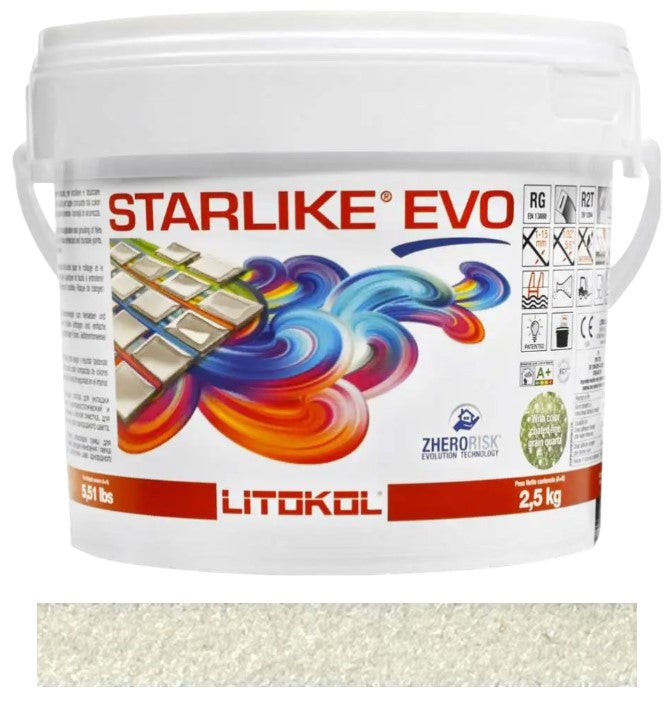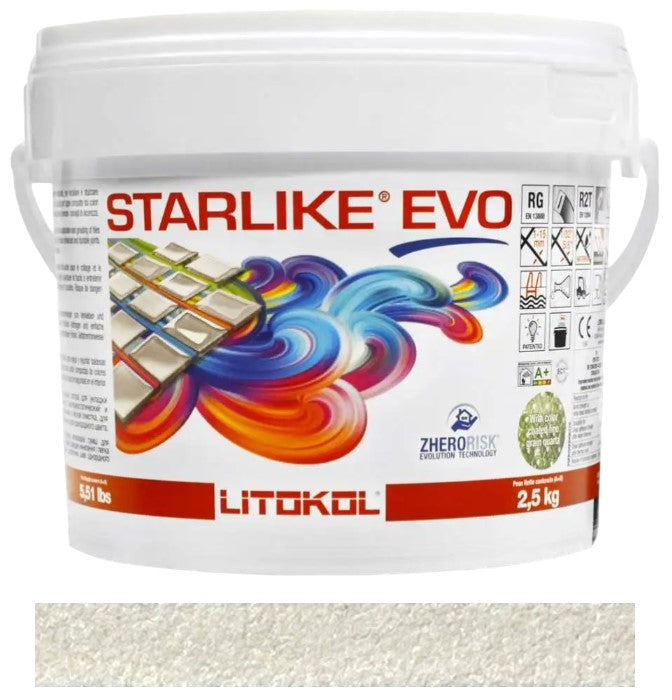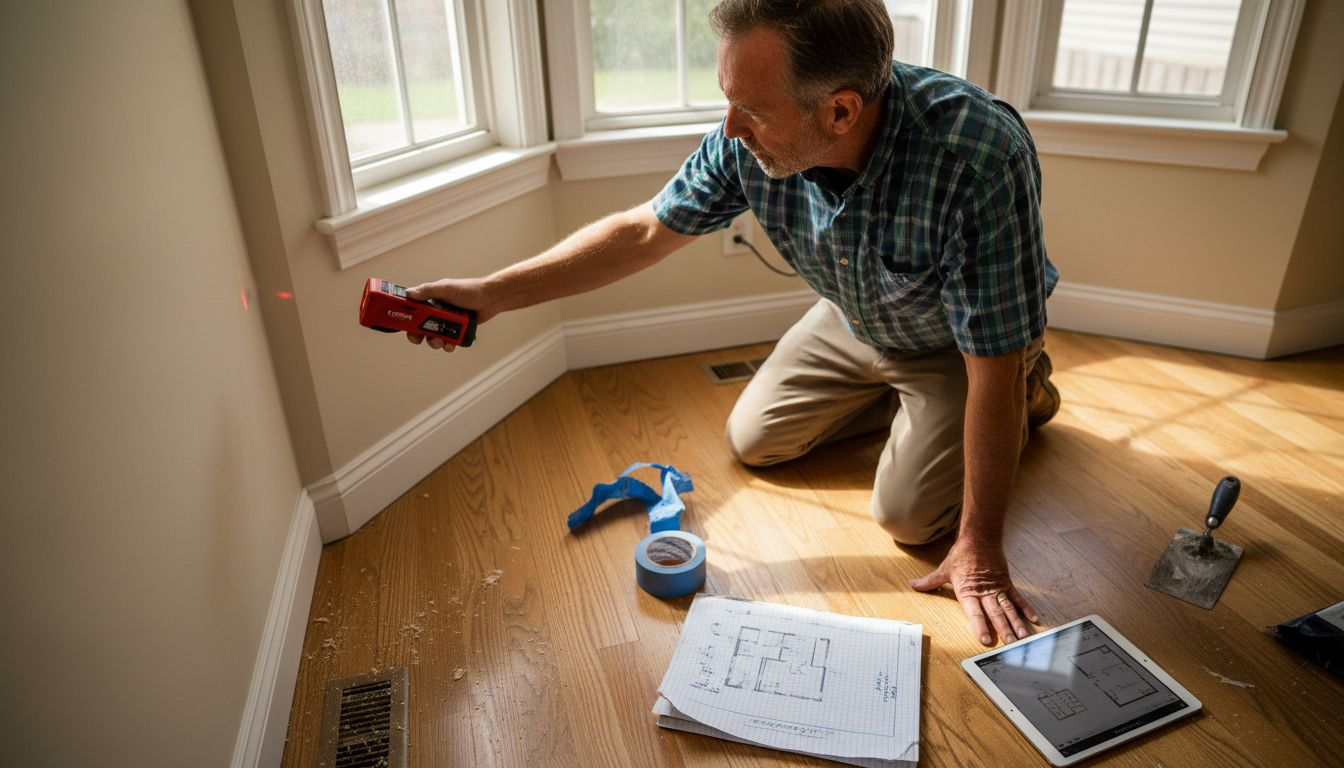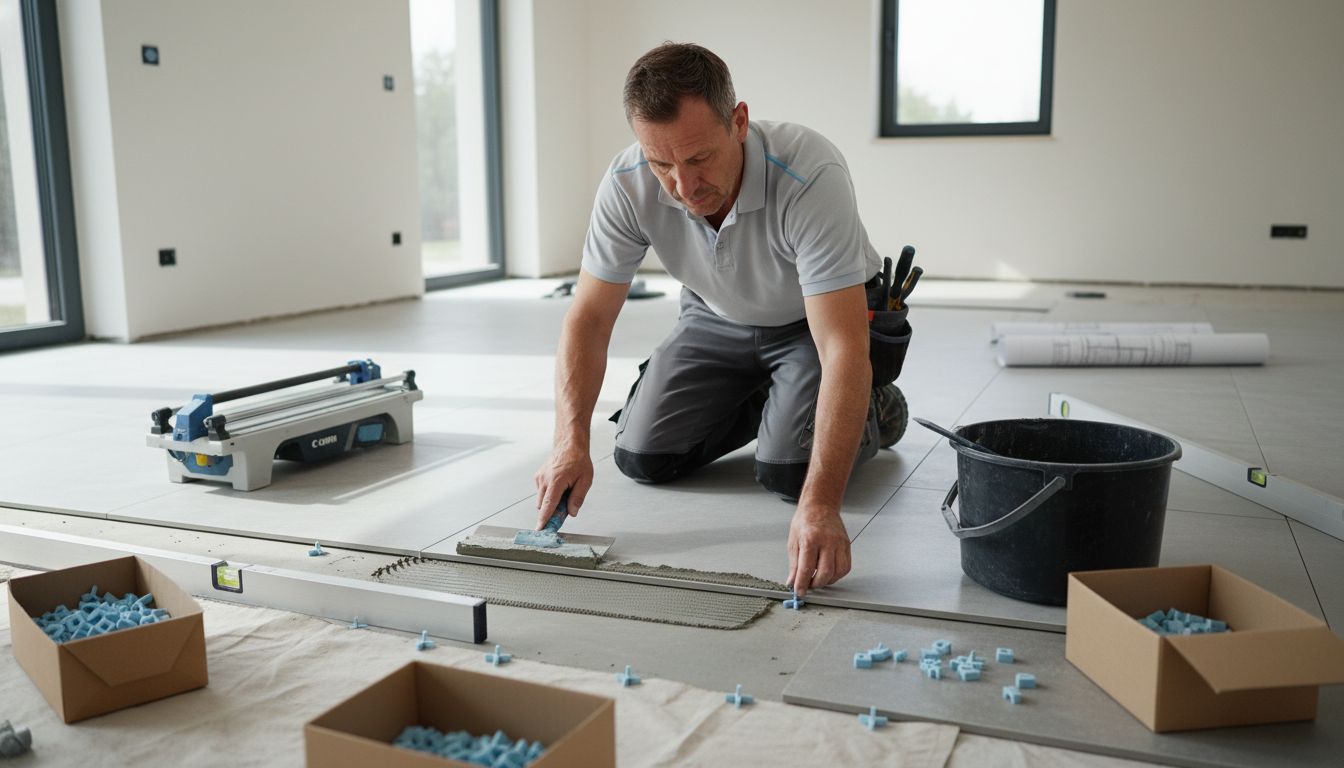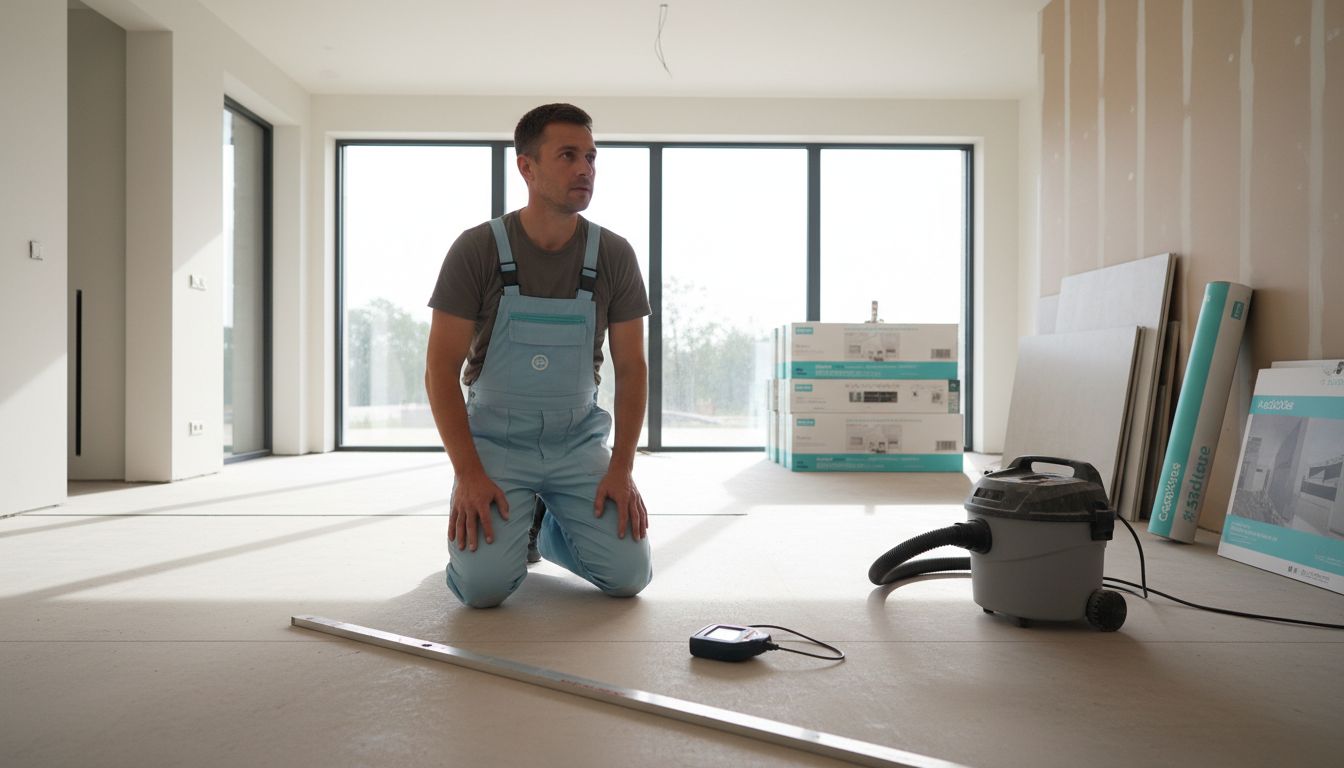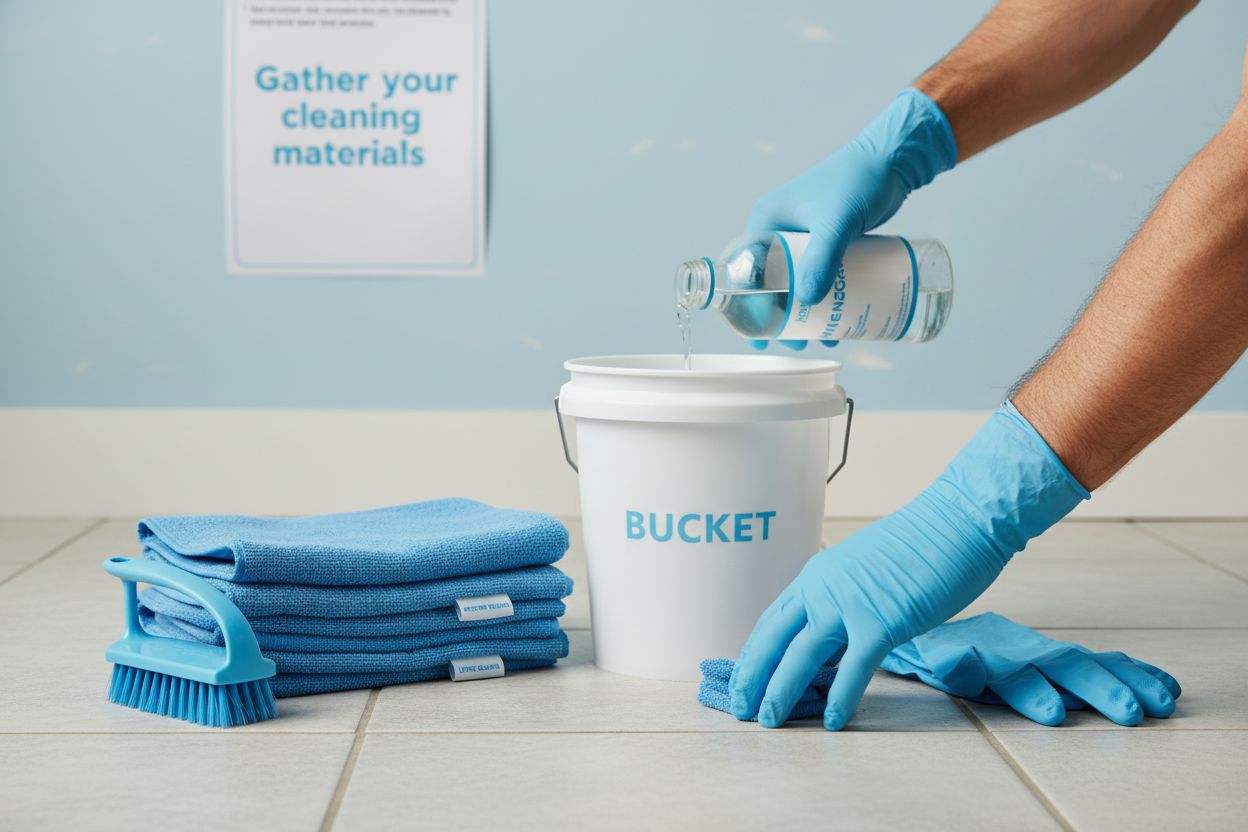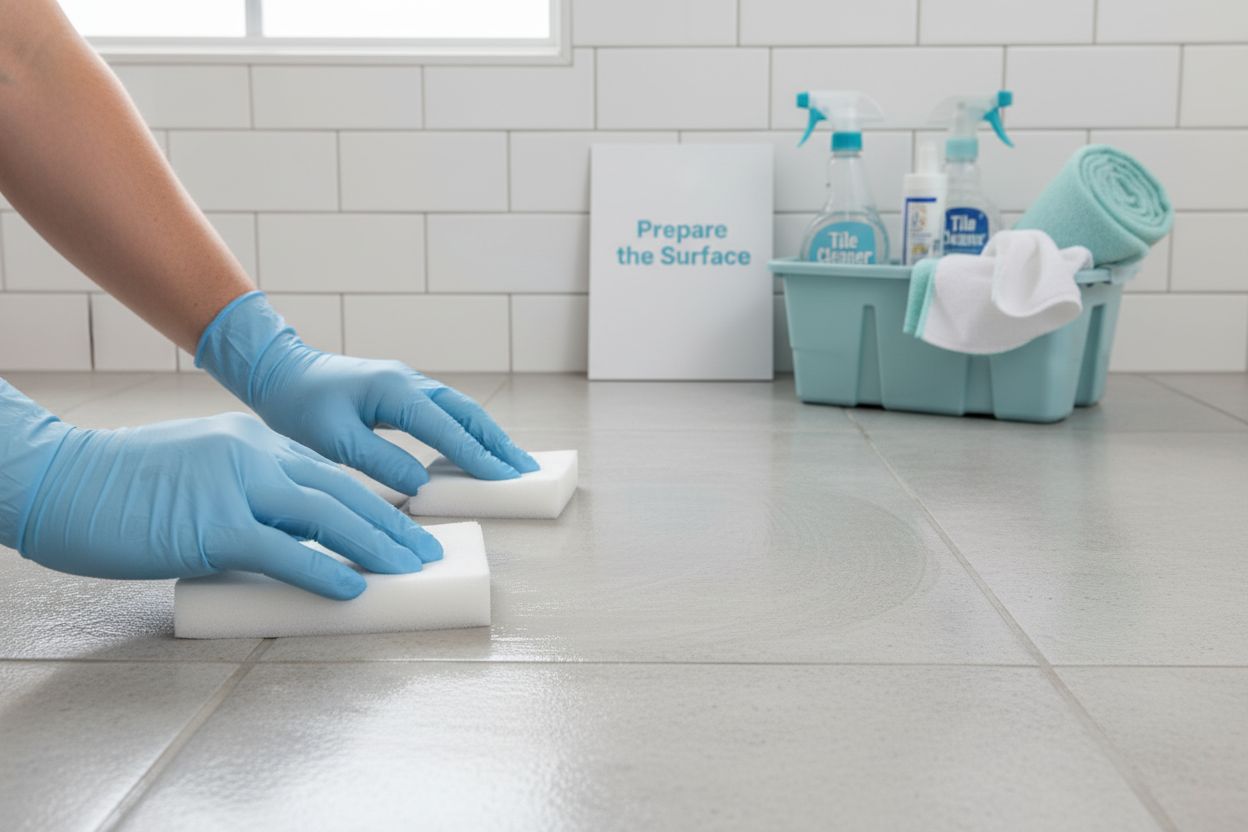Choosing the right tile adhesive can make or break your remodeling project. Most people focus on tile pattern or color, but the real trouble often starts underneath the surface. Adhesive-related failures can cause project costs to jump by 200-300 percent compared to the original installation expense. Knowing which adhesive works for each surface could save you thousands and keep your tiles looking flawless for years.
Below is a comparison table outlining the main types of tile adhesives mentioned in the article along with their key features and ideal applications.
| Adhesive Type | Key Features | Typical Applications |
|---|---|---|
| Cement-Based | Strong bonding, affordable, basic water resistance | General wall and floor tile installation |
| Polymer-Modified | Enhanced flexibility, high water resistance, reduced shrinkage | Wet areas, exterior, high-traffic spaces |
| Specialty Adhesives | Rapid curing, chemical resistance, tailored for unique surfaces | Commercial, industrial, specialty tiles |
Table of Contents
- What Are Tile Adhesive Types And Their Functions?
- Why Choosing The Right Tile Adhesive Matters
- How Different Tile Adhesive Types Work
- Key Concepts Behind Tile Adhesive Performance
- Real-World Applications Of Tile Adhesive Types
Quick Summary
| Takeaway | Explanation |
|---|---|
| Choose the right adhesive for surfaces | Selection depends on both substrate type and tile material to ensure durability. |
| Consider environmental conditions | Moisture levels and temperature fluctuations affect adhesive performance significantly. |
| Understand adhesive composition | Polymer-modified adhesives offer flexibility and better moisture resistance compared to traditional options. |
| Evaluate long-term implications | Wrong adhesive selection can lead to costly repairs and structural failures over time. |
| Tailor adhesives to specific applications | Different areas, like kitchens and bathrooms, require specific adhesive properties for optimal results. |
What are Tile Adhesive Types and Their Functions?
Tile adhesives are specialized binding materials designed to securely attach tiles to various surfaces, creating a strong, durable connection between the tile and the underlying substrate. These crucial construction materials serve as the foundational support for tile installations across residential and commercial spaces.
The Core Purpose of Tile Adhesives
Tile adhesives perform several critical functions beyond simple attachment. They create a uniform, level surface that compensates for minor substrate imperfections, distribute mechanical stress evenly, and provide moisture resistance. The right adhesive ensures tiles remain firmly in place, preventing shifting, cracking, or detachment under different environmental conditions.
According to construction materials research from BuildingResearch.org, the selection of an appropriate tile adhesive depends on multiple factors including:
- Surface type (concrete, wood, drywall)
- Tile material (ceramic, porcelain, natural stone)
- Environmental exposure (moisture levels, temperature variations)
- Installation location (interior walls, exterior floors, wet areas)
Understanding Adhesive Composition and Performance
Modern tile adhesives are engineered with complex chemical compositions that provide specific performance characteristics. Polymer-modified adhesives, for instance, offer superior flexibility and water resistance compared to traditional cement-based formulations. These advanced formulations contain special additives that enhance bonding strength, reduce shrinkage, and improve overall tile installation durability.
For those interested in learning more about tile selection, check out our comprehensive guide on understanding floor tile types. This resource provides additional context on how tile characteristics influence adhesive selection and overall installation success.
Why Choosing the Right Tile Adhesive Matters
Selecting the appropriate tile adhesive is not merely a technical detail but a critical decision that directly impacts the longevity, performance, and aesthetic quality of your tile installation. The wrong adhesive can lead to significant structural and visual problems that compromise your entire project.
Long Term Performance and Durability
The consequences of improper adhesive selection extend far beyond initial installation. Incorrect adhesives can cause premature tile failure, resulting in costly repairs and potential structural damage. Different surfaces and environments demand specific adhesive properties to maintain integrity.
According to materials science research from the International Journal of Construction, key performance indicators for tile adhesives include:
- Chemical compatibility with substrate materials
- Moisture resistance capabilities
- Temperature tolerance range
- Flexibility and stress absorption potential
- Bonding strength under varying environmental conditions
Financial and Structural Implications
The financial impact of choosing the wrong tile adhesive can be substantial. Improper adhesives may cause tiles to detach, crack, or develop moisture-related issues, necessitating complete reinstallation. Professional tile installation experts estimate that adhesive-related failures can increase project costs by 200-300% compared to initial installation expenses.
For homeowners looking to understand more about tile installation nuances, our comprehensive guide on ceramic tile cutting techniques provides additional insights into professional installation practices that complement proper adhesive selection.
How Different Tile Adhesive Types Work
Tile adhesives are sophisticated chemical systems engineered to create robust connections between tiles and underlying surfaces. Understanding their working mechanisms reveals the complex science behind successful tile installations.
Chemical Bonding Mechanisms
Tile adhesives operate through intricate molecular interactions that transform them from liquid or powder states into solid, durable bonding layers. The adhesion process involves multiple scientific principles including mechanical interlocking, chemical bonding, and surface tension management. Different adhesive formulations leverage unique chemical properties to achieve strong, lasting connections.
According to construction materials research from Materials Science and Engineering, primary adhesive bonding mechanisms include:
- Mechanical interlocking within substrate pores
- Chemical reaction between adhesive components
- Electrostatic attraction between surface molecules
- Van der Waals intermolecular forces
- Hydrogen bonding at molecular interfaces
Performance Characteristics of Adhesive Types
Each tile adhesive type demonstrates distinct performance characteristics based on its chemical composition.
![]() Cement-based adhesives, for instance, chemically react with water to create a crystalline structure that provides exceptional strength. Polymer-modified adhesives incorporate synthetic resins that enhance flexibility, water resistance, and overall bonding performance.
Cement-based adhesives, for instance, chemically react with water to create a crystalline structure that provides exceptional strength. Polymer-modified adhesives incorporate synthetic resins that enhance flexibility, water resistance, and overall bonding performance.
For homeowners seeking additional insights into tile installation complexities, our comprehensive guide on waterproofing bathroom tiles offers valuable context about creating moisture-resistant tile environments that complement proper adhesive selection.
Key Concepts Behind Tile Adhesive Performance
Tile adhesive performance transcends simple attachment, representing a complex interplay of material science, chemical engineering, and environmental adaptation. Understanding these intricate performance dynamics helps professionals and homeowners make informed decisions about tile installation strategies.
Fundamental Performance Metrics
Adhesive performance is measured through multiple sophisticated parameters that evaluate mechanical strength, chemical stability, and long-term durability. These metrics go beyond basic bonding capabilities, examining how adhesives respond to various environmental stressors and substrate interactions.
This table summarizes key performance metrics used to evaluate tile adhesive suitability, as detailed in the article.
| Performance Metric | Description |
|---|---|
| Tensile Adhesion Strength | Measures the adhesive’s ability to hold tiles under tension |
| Vertical Slip Resistance | Assesses the tile’s resistance to slipping on vertical surfaces |
| Water Retention Capacity | Indicates how well the adhesive maintains moisture during setting |
| Deformation Under Stress | Evaluates the adhesive’s flexibility under mechanical pressure |
| Chemical Resistance | Tests stability against exposure to cleaning agents and chemicals |
| Temperature Tolerance | Defines the adhesive’s capability to perform under heat variation |
According to construction materials research from the International Standards Organization, critical performance evaluation metrics include:
- Tensile adhesion strength
- Vertical slip resistance
- Water retention capacity
- Deformation under mechanical stress
- Chemical resistance and stability
- Temperature tolerance range
Environmental and Substrate Compatibility
The effectiveness of tile adhesives depends heavily on their compatibility with specific environmental conditions and substrate materials. Different adhesive formulations are engineered to perform optimally under unique circumstances, such as high moisture environments, temperature fluctuations, or specialized surface compositions. Polymer modifications and advanced chemical additives enable adhesives to adapt to challenging installation scenarios.
For homeowners interested in understanding tile surface variations that impact adhesive selection, our comprehensive guide on glazed versus unglazed tiles provides additional insights into material characteristics that influence adhesive performance.
Real-World Applications of Tile Adhesive Types
Tile adhesives are not universal solutions but specialized systems designed for specific environments and installation requirements. Understanding their practical applications helps professionals and homeowners select the most appropriate bonding technology for their unique project needs.
Residential Installation Scenarios
Residential spaces demand nuanced adhesive selection based on moisture exposure, surface complexity, and aesthetic requirements. Different areas within a home require tailored adhesive approaches to ensure long-lasting, visually appealing tile installations.
According to construction materials research from the Residential Tile Installation Institute, critical application considerations include:
- Kitchen backsplash areas requiring heat resistance
- Bathroom surfaces needing high moisture protection
- Living room floors with varying thermal expansion
- Outdoor patio tiles exposed to temperature fluctuations
- Shower enclosures demanding waterproof bonding
Commercial and Specialized Applications
Commercial environments present more complex adhesive requirements, where performance goes beyond aesthetic considerations. Industrial and public spaces demand adhesive systems capable of withstanding extreme conditions, including heavy foot traffic, chemical exposures, and substantial mechanical stress. Specialized tile adhesives in these settings must provide exceptional durability, rapid curing times, and resistance to environmental degradation.
For homeowners seeking deeper insights into tile installation complexities, our comprehensive guide on understanding matte versus glossy tiles offers additional context about surface characteristics that influence adhesive performance in various residential and commercial settings.

Upgrade Your Tile Project With Confidence and Long-Lasting Results
Choosing the right tile adhesive can make or break your renovation project. As highlighted in our article, common challenges like tile detachment, moisture damage, and uneven surfaces can turn a home improvement dream into a costly headache. Whether you are a homeowner or a professional builder, using the best adhesive solution is crucial for strong bonds, reliable durability, and peace of mind. You deserve results that last and look stunning every day.

Ready to take the guesswork out of your next tiling job? At TileChoices.com, we offer only high-quality tiles backed by expert guidance on adhesive compatibility and proper installation. Discover comprehensive product information, project tips, and a wide selection tailored to your specific needs. Do not let preventable adhesive mistakes ruin your investment. Explore our latest tile collections or request a sample today to build a project that stands the test of time. Visit our homepage now and start planning with confidence.
Frequently Asked Questions
What are the different types of tile adhesives?
Tile adhesives can be categorized mainly into cement-based, polymer-modified, and specialty adhesives, each designed for specific applications and environments.
How do I choose the right tile adhesive for my project?
Selecting the right tile adhesive depends on factors such as the surface type, tile material, environmental conditions, and installation location. Consider moisture exposure, temperature variations, and the adhesive’s bonding strength.
What are the consequences of using the wrong tile adhesive?
Using an incorrect adhesive can lead to issues like tile shifting, cracking, moisture-related problems, and ultimately significant financial costs for repairs or reinstallation.
How do tile adhesives bond tiles to surfaces?
Tile adhesives bond through a combination of mechanical interlocking, chemical reactions, and electrostatic forces, creating a strong and durable connection between the tiles and the substrate.

